During last year’s Buda, I was able to see a really nice variety of courses. Thanks to Tony Muldoon’s organizational efforts, the last one that we played in Wales was Southerndown. Southerndown has a really interesting architectural heritage. Designed by Willie Fernie in 1905, the course was modified over the years by the likes of Willie Park, Herbert Fowler, and Harry Colt, and most recently Donald Steel. While I don’t know the specific work done by each of these, the current course is a treat.
Southerndown doesn’t really fit the hidden gem category as it’s known as one of the top courses in Wales, yet it’s not been discussed very much here.
The course is on an interesting piece of land. It’s called a “downland” course and is built on a layer of soil atop a large limestone hill. It plays much like a links, and also has all sorts of heather, bracken, & gorse. The course’s website has a description of the unique land.
http://www.southerndowngolfclub.com/course_history.phpThe scenery in Wales continued to impress.
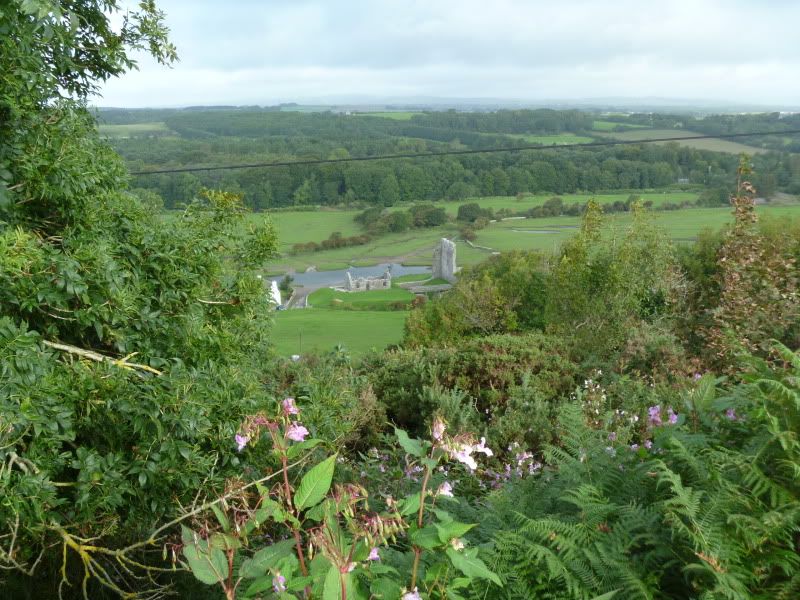
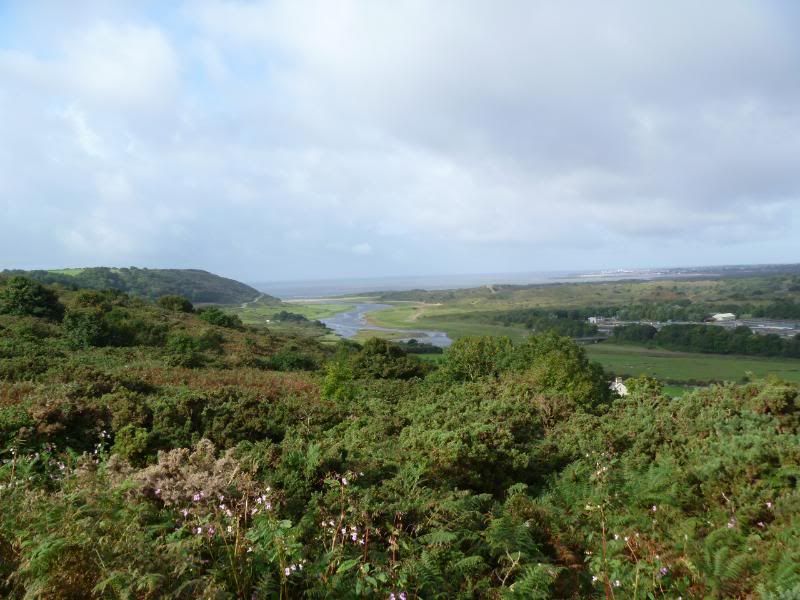
A member of the grounds staff hanging out by the practice putting green.
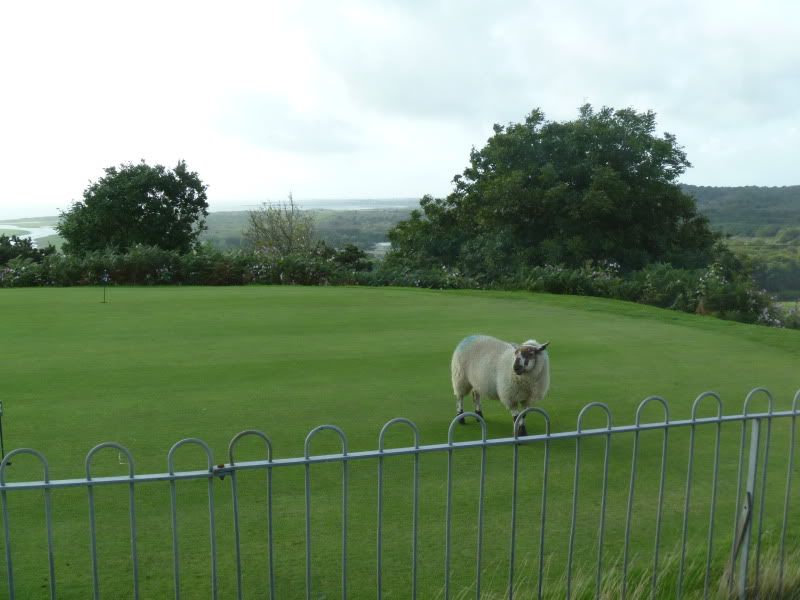
Hole 1 360 yards, par 4
Southerndown opens in a demanding way. The course was 6900 yards when it opened in 1905, and this hole made it feel like it still was. Instead, from the yellow tees, it’s about 6100. The first hole feels like it’s straight uphill and photos don’t do the climb justice. The expanse of gorse & bracken makes the first drive all the more intimidating.
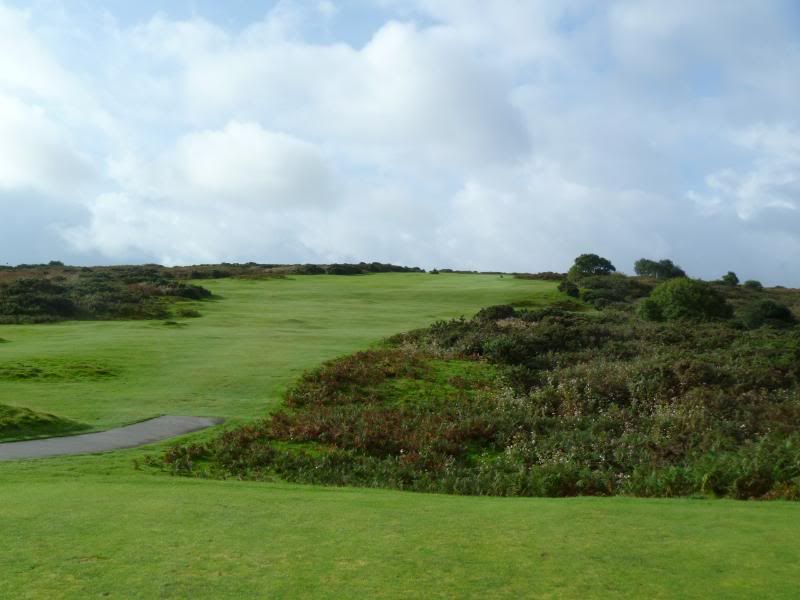
You won’t be getting a level lie in this fairway. I didn’t hit it far enough to even get a glimpse of the green.
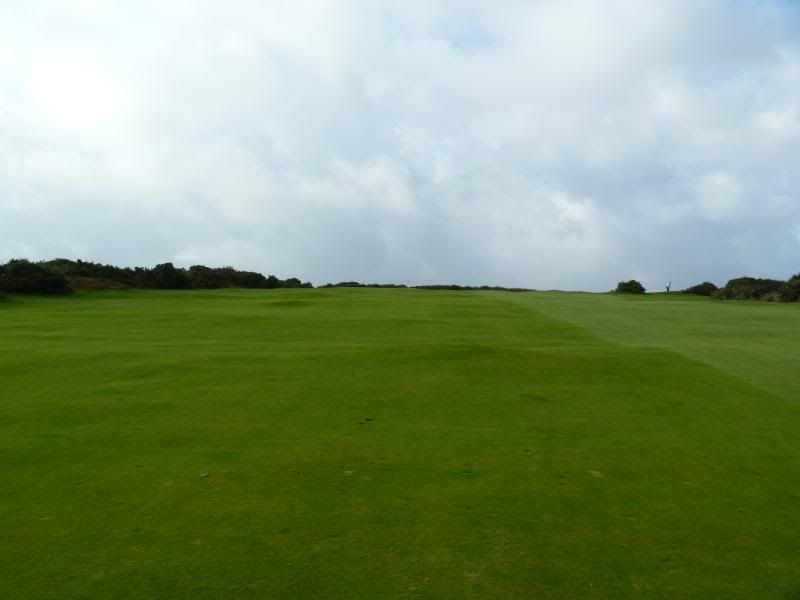
With the climb of the hole, the green doesn’t require much protection. There is a solitary bunker on the front left, and you can see how a slightly short approach will roll back down.

From behind, looking back towards the tee and clubhouse.
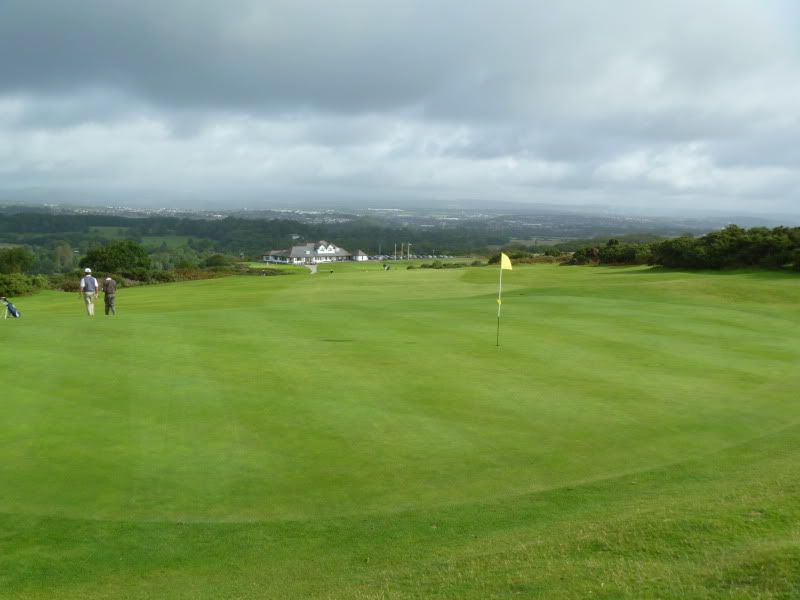
Hole 2 408 yards, par 4
No rest on the second hole’s tee shot. The fairway slopes from left to right, and the better play is to the left side of the fairway.
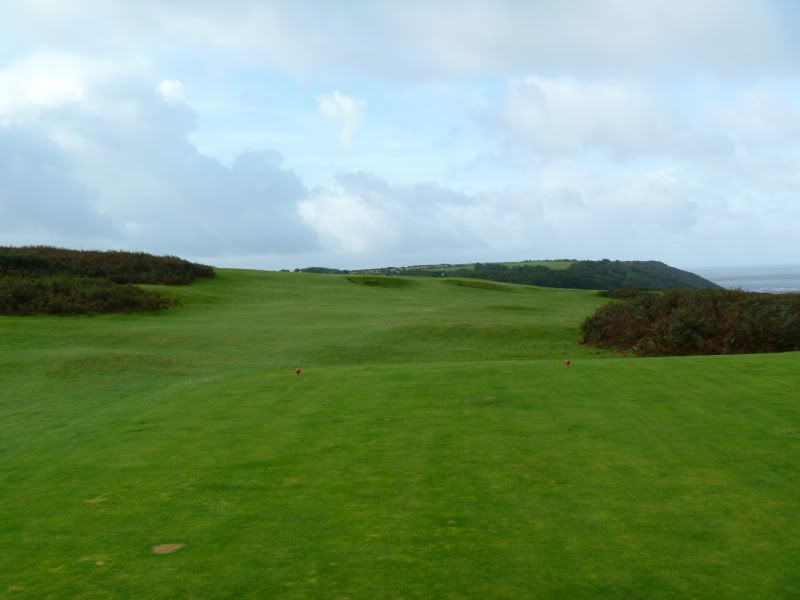
The green is on the left side of the photo, but I was a little more interested in the view. Too interested, I’m afraid, to take good photos of the bunkers that are scattered in the fairway. The ones in the second photo are actually well short of the green. The green also slopes from left to right, and missing the green right is where most of the trouble is.
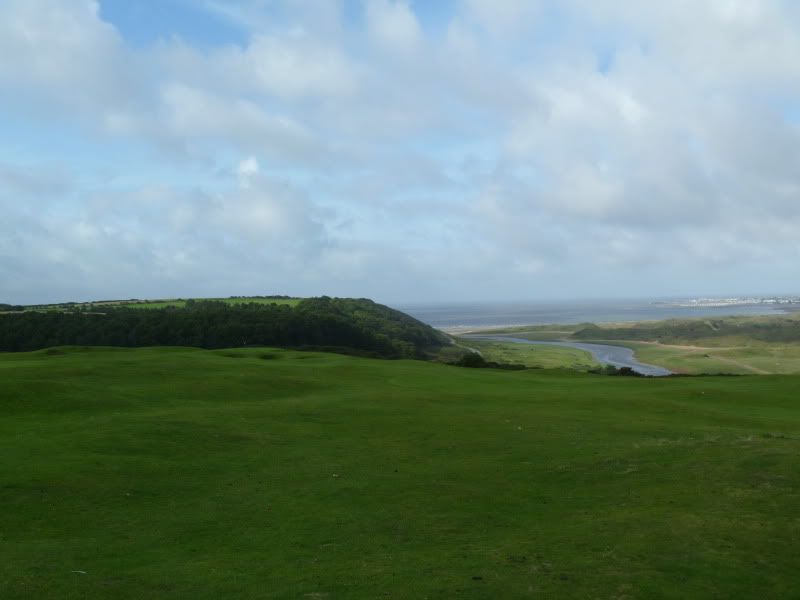
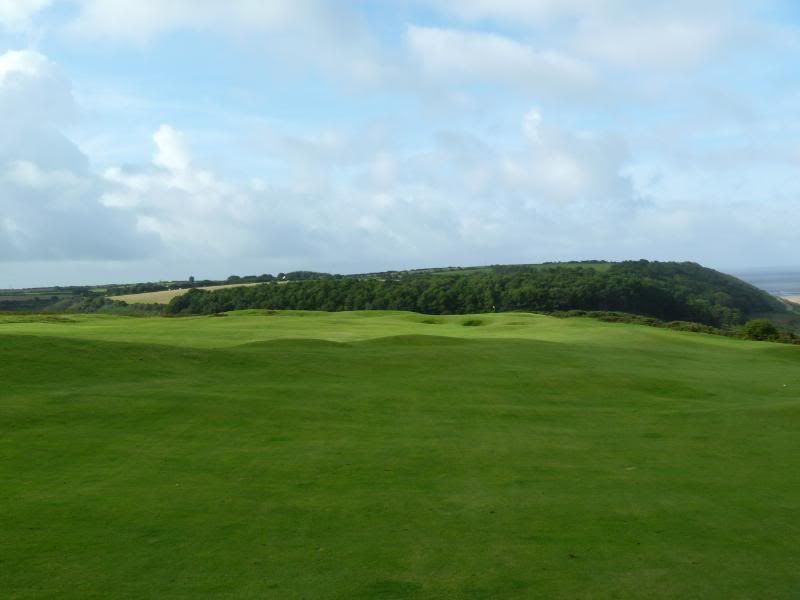
Hole 3 400 yards, par 4
An uphill, blind tee shot. Fortunately there are aiming poles on these holes. Plenty of room off the tee.
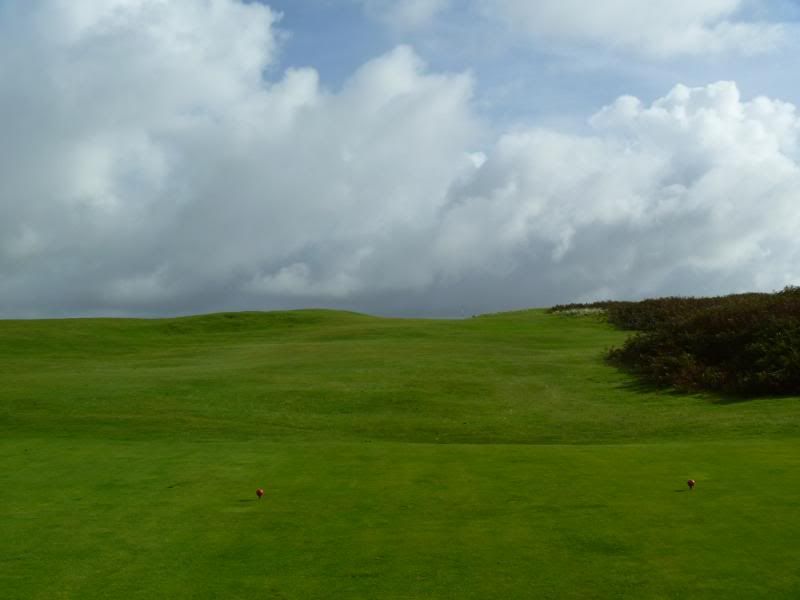
If you like skyline greens, you’ll love Southerndown.

Note the steep slope in front of the green, making playing extra club essential. The bracken on the left side is a farther from the green’s surface that the photo makes it seem.
